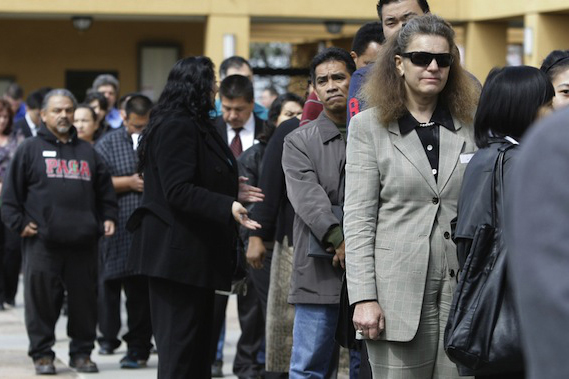The Labor Department’s announcement Friday that 151,000 jobs were created in January and that the unemployment rate dropped to an eight-year low of 4.9% was certainly good news for Americans.
The total of new jobs was less than last year’s 221,000 monthly average, but not bad for January. Strength appeared in both the manufacturing and construction sectors, bellwethers of overall economic health. Perhaps best of all was the news that average hourly wages were up—a modest 0.5%, 2.5% over the past 12 months, NewsNow reported.
Despite the positive figures, there may be potholes in the road ahead. One is the state of the Chinese economy, with which America’s economic fate is intertwined through imports, exports and debt. China’s high rate of growth is slowing. At the same time, its overseas investments amounted to $110 billion in 2015, up 16% from the year before, with the United States its favorite partner at $20 billion in mergers and acquisitions.
Another potential problem is the United States’ feeble growth rate, only 0.7% in the final quarter of 2015. The Federal Reserve’s next move on the interest rate, which it finally raised in December, remains unknown, with a meeting scheduled for March. Labor force participation remains at a worrisome, low rate of 62.7%.
Falling oil prices are another phenomenon, and the impact cuts both ways. Lower fuel costs stimulate consumer spending, but at the same time oil and gas companies are reducing production and employment.
All in all, the 2016 presidential campaign is proceeding with an economy in healthy condition yet hopes that it could do better. What the candidates recommend for how to get there will be all-important.
Fewer Adults Working
Only 62.7% of adult Americans are working. The so-called Labor Force Participation rate hasn’t been this low since the late 1970s. The rate measures how many people over age 16 are working or actively seeking work. Back in the ‘70s, it was low because fewer women worked outside the home, CNNMoney reported.
That’s not the story today. Now, three factors are driving the decrease in workers.
The first is that a huge part of the adult population, baby boomers, are retiring. That’s expected and healthy. It explains about half of the decline in the workforce.
The second is more young people are going to college and graduate school. They are studying more, which should be a positive for the nation.
But the third one is alarming: some people have just given up on finding work. It’s hard to quantify how many people fall into this dropout category, but it’s large enough to matter.
The Wall Street Journal estimates that about 2.6 million of the roughly 92 million American adults who don’t work want a job but aren’t looking for one.


